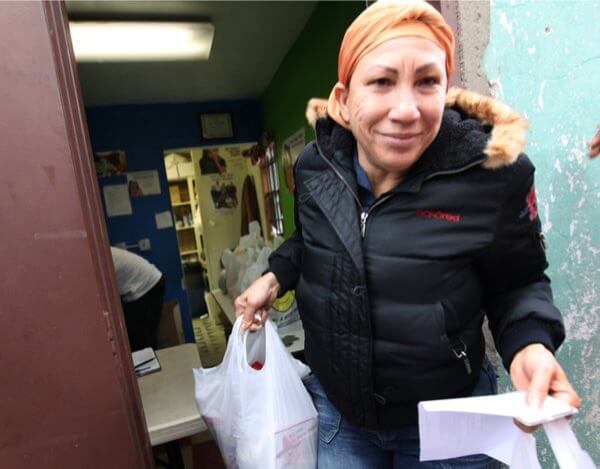By Gina Martinez
New York City families are hungrier than ever following congressional budget cuts to the food stamp program, a new report from the Food Bank of New York said.
The hunger-relief organization recently released a report, “Trade-Offs at the Dinner Table: The Impacts of Unwanted Compromises,”four years after Congress’ 2013 slashing of SNAP funding to pay for increases in school meal costs. Cuts to the Supplemental Nutrition Assistance Program, formerly known as food stamps, have left struggling New Yorkers relying heavily on food pantries to eat.
The report said one in five New Yorkers relies on SNAP to help buy food, which on average provides $260 a month per household for groceries. In 2013 budget cuts took an average of $18 a month from New York families that relied on SNAP, which is now at a high of $21. President Donald Trump’s proposed budget would slash $200 million in funding over the next decade, further affecting poor New York families, the report said.
SNAP contributes to $3 billion in food sales a year and every dollar spent on SNAP leads to $1.79 in economic growth in the city. Since 2013, cuts to SNAP have cost city residents $770 million in lost benefits and the city $1.3 billion in economic activity.
The study revealed that as of October 2016, 308,422 Queens residents made up 13 percent of SNAP recipients compared to 473,526 Bronx residents, leading the city with 33 percent.
The cuts to SNAP have led to a greater reliance on food banks by poorer New Yorkers, but pantries are severely underfunded. The report said New York City’s food pantries and soup kitchens distribute 100 million meals annually, and since SNAP was cut in November 2013, 77 percent of food pantries and soup kitchens across New York City are continuing to see elevated visitor traffic. Since then, nearly 80 percent of food pantries and soup kitchens reported seeing more visitors.
According to the Food Bank, federal budget proposals have emerged that would impose large-scale cuts to SNAP, and the House of Representatives has also announced plans to release a new version of the Farm Bill by early 2018. The Food Bank said it believes the stakes are high because the Farm Bill will set the country’s farming, food and hunger policies for the next five years.
“In key legislation over the past decade, decision-makers in Washington have struck compromises on hunger issues that often simply pit the interests of vulnerable people against each other,” the report said. “These compromises have forced other trade-offs: the trade-offs low-income individuals must make when they cannot afford enough food; trade-offs of desperation, not choice.”
Food pantries surveyed overwhelmingly listed sufficient amount of food as the most necessary improvement with operating support coming in second and equipment and capital improvements in third.
Margarette Purvis, president and CEO of Food Bank For New York City, said by pinpointing the depth of poverty in specific pockets of the city, the nonprofit is better able to find real solutions.
“We know that when we invest in access to programs like SNAP, there is less hunger, and we know what would happen if this support were removed,” she said. “When our nation’s safety net is under threat, and half of our food pantries and soup kitchens are running out of food, these findings challenge our elected leaders – and all New Yorkers – to raise their voices, partner in solutions, and advocate for the resources our most vulnerable neighbors need to survive and thrive.”
Reach Gina Martinez by e-mail at gmart































